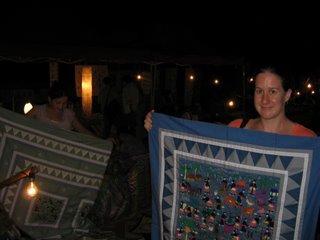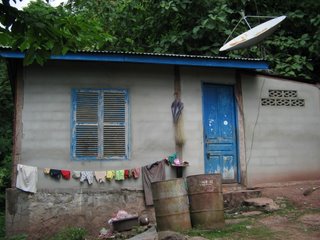


This is Chapter 6 of our Laos journey. There will be 8 chapters in all.
Our time in Laos was very short, and I don’t claim to be able to describe its peoples or cultures in any comprehensive way like I might about Thailand after being here nearly two years. However, we did make a number of interesting observations during our days in Luang Prabang.
Thailand, being 75% ethnic Thai (including Thai Lao) and 11% ethnic Chinese, has a relatively homogenous culture with some regional variation. National unity is strong, with few exceptions, and conformity is strongly valued. Other ethnic groups – particularly other southeast Asians – are often viewed with suspicion or even distaste.
In Laos, by contrast, only about 50% of the people are ethnic "Lao." The other half of the population is made up of more than 100 different ethnicities, including numerous Thai subgroups, hill tribes, Chinese, and Vietnamese. Although the groups are geographically separated, with the Lao primarily living in the flatter lowlands and other ethnic groups inhabiting the hills and mountains, society as a whole is much more mixed than in Thailand. During our short visit, we speculated that social conformity and unity are less important in Laos.
Economically, the people of Luang Prabang are at an interesting point. The city is geographically isolated – connected to other areas only by a small highway and the Mekong River. Tourism has brought about a recent boom, however, and entire streets and blocks are filled with guest houses and restaurants catering to foreigners. Although most of the city is still residential, it is obvious that tourism is rapidly increasing the living standards of a select group.
When we hiked up the hill in the middle of town, the path took us through a neighborhood of shabby houses and shacks. The people living there were clearly not wealthy, and their homes had few comforts. What nearly every house seemed to have, however, was a satellite dish. As we rose higher above the roofs of the neighborhood, we could see them poking up to the sky. What are they used for? As far as we could tell, to watch Thai TV. We saw many families watching Thai soap operas, commercials, and music shows. We even saw the Thai national anthem as it was played daily at 6pm.
We were struck by the high cost of living in Laos as compared to Thailand. A plate of noodles that would cost 50 cents here was at least 75 cents there. At first we thought it was because we tourists and visiting mostly tourist areas. It became clear, though, that even the residents of Luang Prabang were paying the higher prices. We weren’t sure whether this was because tourism has inflated the prices of basic necessities, or because the isolation of the city means that those necessities are more scarce to begin with, though we were inclined to lean towards the latter explanation. By contrast, however, the price of souvenirs – silk scarves, hill tribe handicrafts, etc – was far cheaper than in Thailand. We were excited to make a few purchases for our future home in America!
Overall, our visit to Laos left us with many questions about its society and culture. I only wish we had more time to travel back and find some answers.

[The photo of the watercress salad is included to show more of the remarkably delicious local food – Lao with French influence – we were able to eat in Laos.]
1 comment:
Fascinating to find your blog! I travel frequently with an NGO (we work with a group in Chiang Mai), but I've never been to Laos, so this is really interesting.
Post a Comment